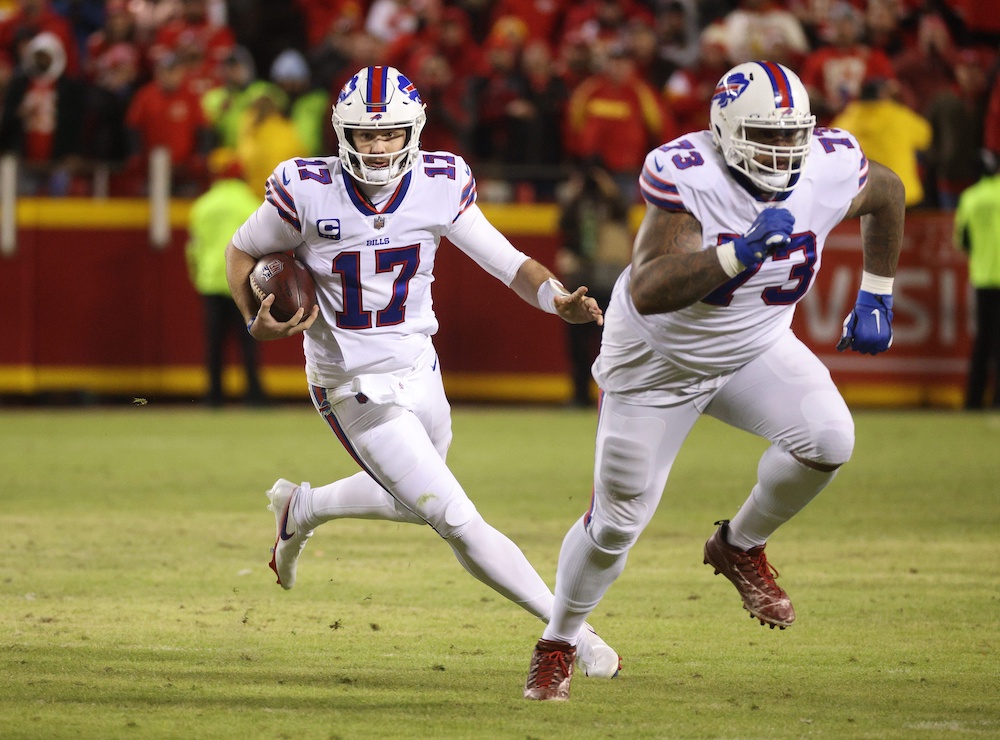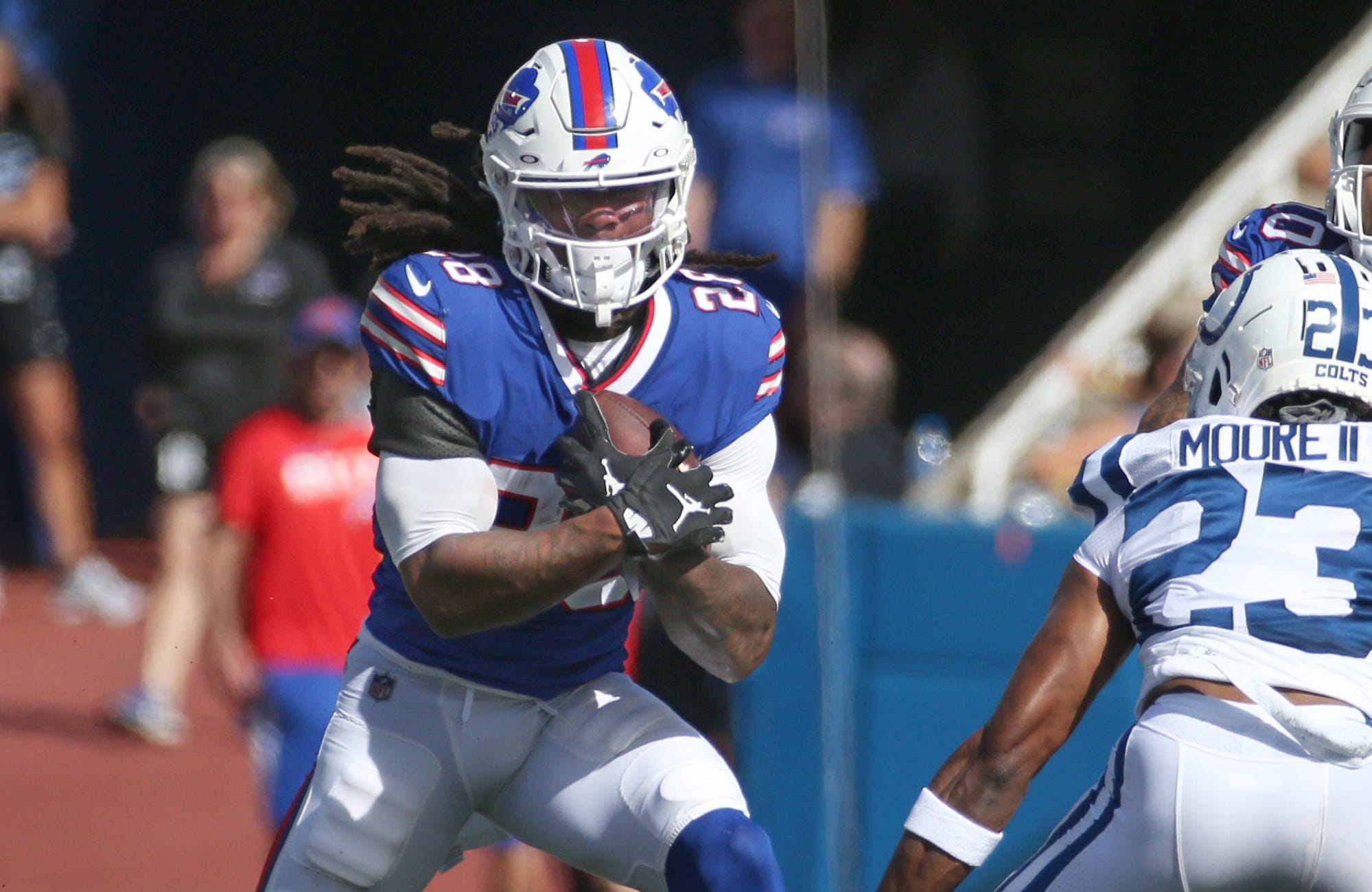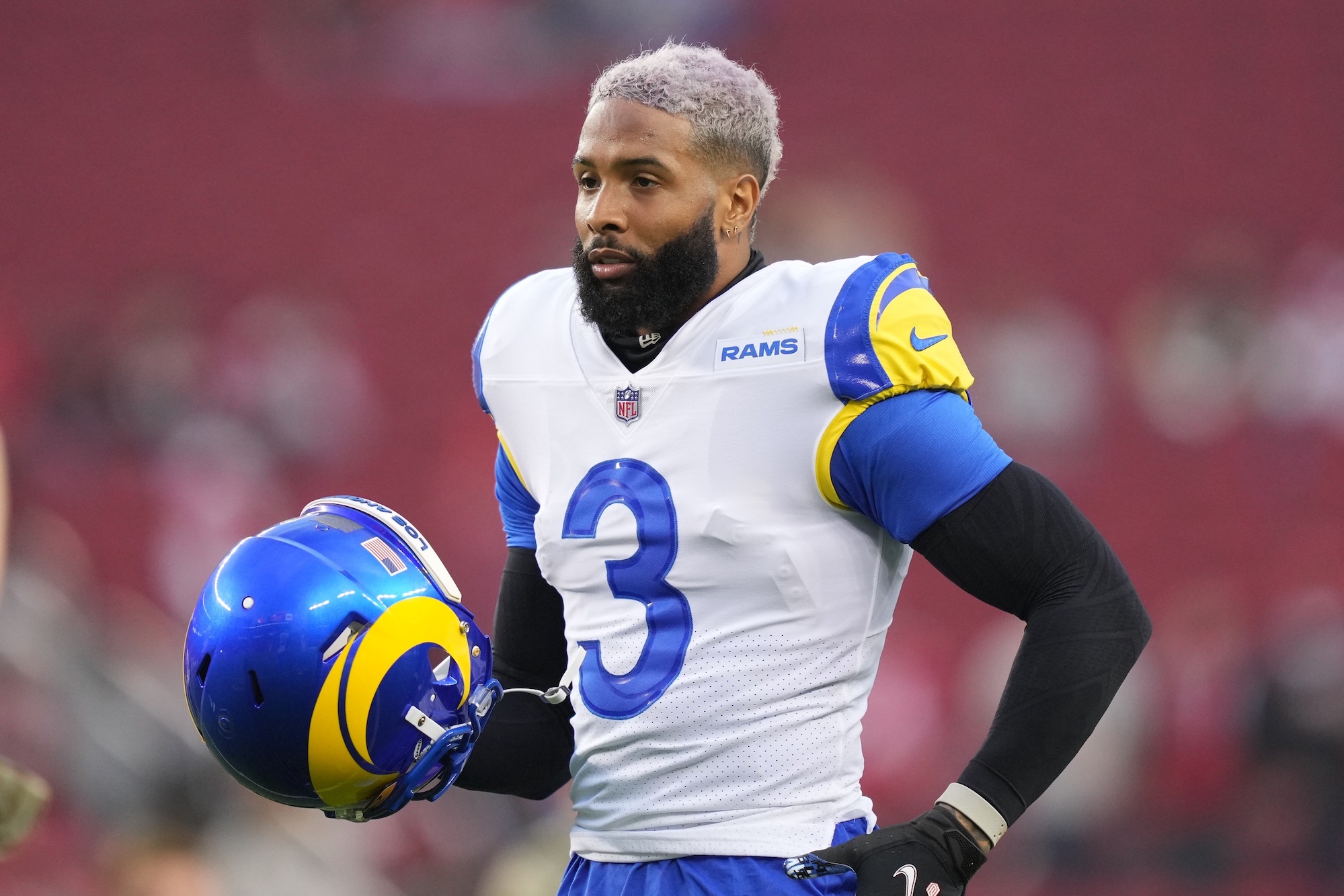The Buffalo Bills offense has been among the best in the NFL over the last two seasons, finishing in the top three of total offense and top five in yards in both 2020 and 2021. While a fair amount of the ingredients have made the Bills so prolific offensively, the unit promises to have some new elements in 2022 and beyond.
The Bills have enjoyed rare continuity with personnel and coaching over the last two seasons, especially on offense, but 2022 will deliver some new elements. Let’s examine how things may evolve.
Coaching
Bills’ quarterback Josh Allen has developed into one of the league’s best players and did so with Brian Daboll as his offensive coordinator since he was drafted in 2018. With Daboll now the head coach of the New York Giants, the Bills elevated quarterback coach Ken Dorsey to the offensive coordinator role. Dorsey has also worked with Allen over the last three seasons as his position coach and was Allen’s top choice to replace Daboll.
While there will be plenty of carryover from the Daboll offense in terms of concepts and verbiage, there also promises to be some new elements. This is Dorsey’s opportunity to put his full stamp on an NFL offense, which should lead to some scheme evolution.
Dorsey might be a first year offensive coordinator but his offensive staff is loaded with coordinator experience. In Joe Brady, Aaron Kromer, Mike Shula and Rob Boras, Dorsey has four assistants that have been NFL offensive coordinators, which should be a major asset to Dorsey.
Offensive Line
I believe that General Manager Brandon Beane has assembled the best offensive line to date in front of Allen. Buffalo features returning stalwarts in left tackle Dion Dawkins and center Mitch Morse, and signed an impact-starter in guard Rodger Saffold who should be a major asset as a run blocker.
At the guard position opposite of Saffold is Ryan Bates, who emerged late in 2021 for the Bills and he earned a four-year contract extension after the Bills offensive line played its best football when Bates took over as a starter.
Spencer Brown is entering his second season and is the scheduled starter at right tackle. Brown had his share of ups and downs as a rookie but his high level moments were impressive and he’s among the most physically gifted offensive linemen in the entire NFL. Brown should take a notable step forward as a sophomore.
Buffalo also added quality depth players in David Quessenberry and Greg Mancz to go with returning players in Cody Ford, Ike Boettger and Tommy Doyle.
While the starting five and depth entering the season is formidable, perhaps the most significant offseason addition to the unit is Kromer who takes over for Bobby Johnson as the offensive line coach. Regarded as one of the league’s best offensive line coaches, Kromer has a long resume of developing young blockers and maximizing veteran talent through his 20-year career in the NFL. During Kromer’s first stint in Buffalo from 2015-16, the Bills led the league in rushing in both seasons. With a mix of experienced starters and developmental players in Buffalo, Kromer is the ideal coach to maximize this unit to make sure Allen is protected and assignments are executed in the run game.
Tight End Usage
Tight end Dawson Knox delivered a breakout season in 2021, setting new career-highs in receptions, yards, touchdowns, reception percentage and drop rate. He has improved steadily across his first three seasons in the NFL and has developed into a trusted option for Allen in the passing game.
Despite Knox taking a major step forward in 2021, the Bills’ tight end contributions were still quite low. As a whole, Bills tight ends collected just 61 receptions (29th in NFL) for 654 yards (25th in NFL). Knox essentially was the Bills’ tight end production and across the last three regular season games and two playoff games, he was the only active tight end on game days.
The Bills drastically improved the depth behind Knox by signing OJ Howard as a free agent this offseason. The addition of Howard not only strengthens the unit but signals an increased utilization of the tight end position in the offense and perhaps more two-tight end formations.
When trying to understand the Bills’ vision, it’s always a sound idea to consider elements in place from the Carolina Panthers’ offense during Head Coach Sean McDermott and Brandon Beane’s mutual time together from 2011-2016 before taking over in Buffalo. The 2011 Panthers’ offense featured Shula as an assistant coach but also the tight end duo of Greg Olsen and Jeremy Shockey. That year, Panthers’ tight ends accounted for 85 receptions for 1,008 yards, which is on par with what the Bills have received over the last two seasons combined.
In 2011, Olsen and Shockey accounted for 151 targets, which was 30% of the Panthers’ passing attempts. By comparison, Bills’ tight ends accounted for 13% of the market share in 2021 and 12% in 2020.
An increased emphasis on involving tight ends in the passing game is a fair expectation for the Bills in 2022 and beyond.
Speed at Running Back
While the Bills offense has been exceptional, there has been a lack of production out of running backs in both the passing game and running game. Several factors have contributed to that including a lack of running back talent, scheme and missing skill sets in the backfield.
More than anything, an absence of a pass-catching back with speed has been absent and that’s why Buffalo invested a second-round pick in James Cook. An explosive athlete with low 4.4-speed that runs routes and catches the football like a wide receiver, Cook is the answer that Buffalo has been looking for.
Cook’s speed to the perimeter will force opposing defenses to respect Buffalo’s ability to run the football outside the tackles in ways that didn’t have to be accounted for with the heavy-footed Devin Singletary and Zack Moss serving as the Bills’ primary running backs over the last two seasons.
Late in 2021, Singletary delivered the most productive stretch of his career. Across the Bills’ final six games including the playoffs, Singletary accounted for 541 yards from scrimmage with nine total touchdowns. With Singletary and Cook likely to be the top two options, and Moss and Duke Johnson behind them, Buffalo’s running back depth chart is the deepest and most diverse yet to pair with Allen in the backfield.
More YAC
When it comes to low-hanging fruit as to how the Bills offense can improve and evolve, more production after the catch stands out. Despite boasting a top-10 passing offense, the Bills were dead last in the NFL with only 4.2 yards after the catch per completion – a full yard below the league average.
Contributing factors to the lack of post-catch production include the types of routes featured in the Bills offense, ball placement from Allen and a lack of weapons that are dynamic with the ball in their hands.
Following an OTA practice this week, Allen acknowledged that lack of run after catch and it’s among his top priorities to improve upon in 2022.
“I think, myself especially, making sure I’m on time, making the right reads and giving our guys good enough balls to get some more YAC,” he said. “That’s one thing I think, on offense, the run after catch wasn’t very high last year, but again, that’s me putting the ball where it needs to be and allowing our guys to catch in a good position to make a run after the catch. So working on that, that’s been one of my biggest takeaways this offseason and trying to work on just ball placement and allowing our receivers to do that.”
The team has also offered more dynamic skill sets to produce after the catch by adding Cook, Howard and wide receiver Jamison Crowder. In addition, more targets should be headed to Knox given the departures of Emmanuel Sanders and Cole Beasley, which freed up 184 targets from last year’s offense. Knox has been one of the Bills’ top producing players after the catch.
Additionally, the Bills were among only seven teams in the NFL last season to receive less than 500 receiving yards from its running backs. With Cook in the mix, that number promises to go up and improve the amount of yards after catch per reception. At Georgia, Cook delivered over 10 yards after the catch per reception for his career.
Filed In
Related Articles
NFL
James Cook Can Help Bills Be NFL’s Most Well-Rounded Offensive Unit
- Aug 16, 2022
NFL
Should Bills Try To Sign Odell Beckham Jr?
- Aug 11, 2022
Written By



































